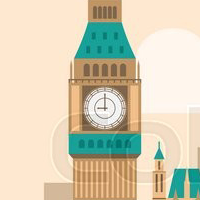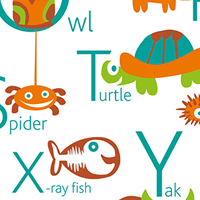Bộ đề thi thử THPT Quốc gia năm 2016 môn Tiếng Anh - Số 23
Đề thi thử THPT Quốc gia 2016 môn Tiếng Anh có đáp án
Bộ đề thi thử THPT Quốc gia năm 2016 môn Tiếng Anh - Số 23 là tài liệu ôn thi THPT Quốc gia cực kỳ hữu ích dành cho các em học sinh ôn tập và củng cố kiến thức để sẵn sàng cho kỳ thi Đại học 2018. Mời các em tải miễn phí bộ đề thi thử THPT Quốc gia môn tiếng Anh này về và tham khảo, ôn thi và đánh giá năng lực bản thân.
Bộ đề thi thử THPT Quốc gia năm 2016 môn Tiếng Anh - Số 11
Đề thi thử THPT Quốc gia 2016 số 2
I. MULTIPLE CHOICES (64 Questions; 8.0 points)
Read the following passage and mark the letter A, B, C or D on your answer sheet to indicate the correct word for each of the blanks from questions 1 to 10.
One of the most urgent environmental problems in the world today is the shortage of clean water. Having clean drinking water is a basic human right. But acid rain, (1) ________ pollution and garbage have made many sources of water undrinkable. Lakes, reservoirs and even entire seas have become vast pools (2) ________ poison. Lake Baikal in Russia is one of the largest lakes in the world. It (3) ________ a rich variety of animals and plants, including 1,300 rare species that do not exist (4) ________ else in the world. But they are being destroyed by the massive volumes of toxic effluent which (5) _______ into the lake every day. Even where law existed, the government did not have the power to enforce them.
Most industries simply ignore the regulations. The Mediterranean Sea (6) ________ 1% of the world's water surface. But it is the dumping (7) ________ for 50% of all marine pollution. Almost 16 countries regularly throw industrial wastes a few miles (8) ________ shore.
Water is free to everyone. A few years ago, people thought that the supply of clean water in the world was limitless. Today, many water supplies have been (9) ________ by pollution and sewage. Clean water is now scarce, and we are at last beginning to respect this precious (10) ________. We should do something now.
(Source: v14ilovetranslation.com)
Question 1: A. industrialized | B. industry | C. industrious | D. industrial |
Question 2: A. of | B. in | C. to | D. on |
Question 3: A. composes | B. consists | C. contains | D. encloses |
Question 4: A. everywhere | B. where | C. somewhere | D. anywhere |
Question 5: A. stay | B. pour | C. burn | D. boil |
Question 6: A. occupies | B. comprises | C. holds | D. makes |
Question 7: A. soil | B. shore | C. land | D. ground |
Question 8: A. on | B. of | C. off | D. away |
Question 9: A. made | B. kept | C. ruined | D. conserved |
Question 10: A. outlet | B. source | C. well | D. nature |
Read the following passage and mark the letter A, B, C or D on your answer sheet to indicate the correct answer to each of the questions from 11 to 20.
Most journeys in Britain and the US are made by road. Some of these are made on public transport but most are by private car.
In Britain many people rely on their cars for daily local activities, e.g. getting to work, doing the shopping, and visiting friends. People living in urban areas may use buses, trains or, in London, the Underground, to get to city centres, mainly because traffic is often heavy and it is difficult to find anywhere to park a car. Some places in the country may have a bus only two or three times a week so people living there have no choice but to rely on their cars.
In the US large cities have good public transportation systems. The El railroad in Chicago and the underground systems of New York, Boston, San Francisco and Washington, DC are heavily used. Elsewhere, most Americans prefer to use their cars. Families often have two cars and, outside major cities, have to drive fairly long distances to schools, offices, shops, banks, etc. Many college and even high-school students have their own cars. Long-distance travel in Britain is also mainly by road, though railways link most towns and cities.
Most places are linked by motorways or other fast roads and many people prefer to drive at their own convenience rather than use a train, even though they may get stuck in a traffic jam.
Long-distance coach/bus services are usually a cheaper alternative to trains, but they take longer and may be less comfortable. Some long-distance travel, especially that undertaken for business reasons, may be by air. There are regular flights between regional airports, as well as to and from London. A lot of freight is also distributed by road, though heavier items and raw materials often go by rail.
In the US much long-distance travel is by air. America has two main long-distance bus companies, Greyhound and Trailways. Amtrak, the national network, provides rail services for passengers. Private railway companies such as Union Pacific now carry only freight, though in fact over 70% of freight goes by road.
The main problems associated with road transport in both Britain and the US are traffic congestion and pollution. It is predicted that the number of cars on British roads will increase by a third within a few years, making both these problems worse. The British government would like more people to use public transport, but so far they have had little success in persuading people to give up their cars or to share rides with neighbours. Most people say that public transport is simply not good enough. Americans too have resisted government requests to share cars because it is less convenient and restricts their freedom. Petrol/gasoline is relatively cheap in the US and outside the major cities public transport is bad, so they see no reason to use their cars less.
(Extracted from Oxford Guide to British and American Culture, Oxford University Press, 2000)
Question 11: In Britain and the US most people travel by ______.
A. air B. rail C. road D. sea
Question 12: According to the passage, people in London may prefer the Underground to their own cars due to ______.
A. long distances B. heavy traffic
C. air pollution D. cheap tickets
Question 13: It is mentioned in paragraph 3 that the public transportation systems in the US are good in ______.
A. large states B. large cities C. all cities D. some states
Question 14: Which of the following is NOT true according to the passage?
A. Few college students in the US have their own cars.
B. Families in the US often have more than one car.
C. The underground systems are popular in some major US cities.
D. Most Americans prefer to drive their cars outside large cities.
Question 15: The phrase "at their own convenience" in paragraph 4 is closest in meaning to ______.
A. at the latest time and nearest place
B. at an appropriate time and place
C. at an early time and nearby place
D. at the fastest time and nearest place
Question 16: Which of the following is true about transport in Britain?
A. Trains are usually cheaper than long-distance coach services.
B. Long-distance travel in Britain is only by road.
C. There are no regular flights between regional airports.
D. Heavier items and raw materials are often transported by train.
Question 17: According to the information in paragraph 6, long-distance travellers in the US can choose from ______ mode(s) of transport.
A. one B. three C. four D. two
Question 18: It is stated in the passage that the major problems of road transport in Britain and the US are ______.
A. traffic jams and pollution B. accidents and pollution
C. drink-driving and traffic jams D. speeding and bad roads
Question 19: According to the passage, people in Britain refuse public transport because ______.
A. they see no reason to use their cars less
B. petrol is relatively cheap in Britain
C. they like to share rides with neighbours
D. they think it is not good enough
Question 20: The word "they" in the last sentence of the passage can best be replaced by ______.
A. Americans B. neighbours C. major cities D. the government
Read the following passage and mark the letter A, B, C, or D on your answer sheet to indicate the correct answer to each of the questions from 21to 30.
Human Nutrition is the study of how food affects the health and survival of the human body. Human beings require food to grow, reproduce, and maintain good health. Without food, our bodies could not stay warm, build or repair tissue, or maintain the heartbeat. Eating the right foods can help us avoid certain diseases or recover faster when illness occurs. These and other important functions are fueled by chemical substances in our food called nutrients. Nutrients are classified as carbohydrates, proteins, fats, vitamins, minerals, and water.
When we eat a meal, nutrients are released from food through digestion. Digestion begins in the mouth by the action of chewing and the chemical activity of saliva, a watery fluid that contains enzymes, certain proteins that help break down food. Further digestion occurs as food travels through the stomach and the small intestine, where digestive enzymes and acids liquefy food and muscle contractions push it along the digestive tract. Nutrients are absorbed from the inside of the small intestine into the bloodstream and carried to the sites in the body where they are needed. At these sites, several chemical reactions occur, which ensures the growth and function of body tissues. The parts of foods that are not absorbed continue to move down the intestinal tract and are eliminated from the body as feces.
Once digested, carbohydrates, proteins, and fats provide the body with the energy it needs to maintain its many functions. Scientists measure this energy in kilocalories, the amount of energy needed to raise one kilogram of water one degree Celsius. In nutrition discussions, scientists use the term calorie instead of kilocalorie as the standard unit of measure in nutrition.
Nutrients are classified as essential or nonessential. Nonessential nutrients are manufactured in the body and do not need to be obtained from food. Examples include cholesterol, a fatlike substance present in all animal cells. Essential nutrients must be obtained from food sources, because the body either does not produce them or produces them in amounts too small to maintain growth and health. Essential nutrients include water, carbohydrates, proteins, fats, vitamins, and minerals.
An individual needs varying amounts of each essential nutrient, depending upon such factors as gender and age. Specific health conditions, such as pregnancy, breast-feeding, illness, or drug use, make unusual demands on the body and increase its need for nutrients. Dietary guidelines, which take many of these factors into account, provide general guidance in meeting daily nutritional needs.
From "Human Nutrition" by Worthington-Roberts, Bonnie, Microsoft ® Student 2009.
Question 21: The first paragraph mainly discusses ______.
A. chemical substances in our food
B. a variety of essential nutrients to human beings
C. the importance of food to human beings
D. the study of human nutrition













